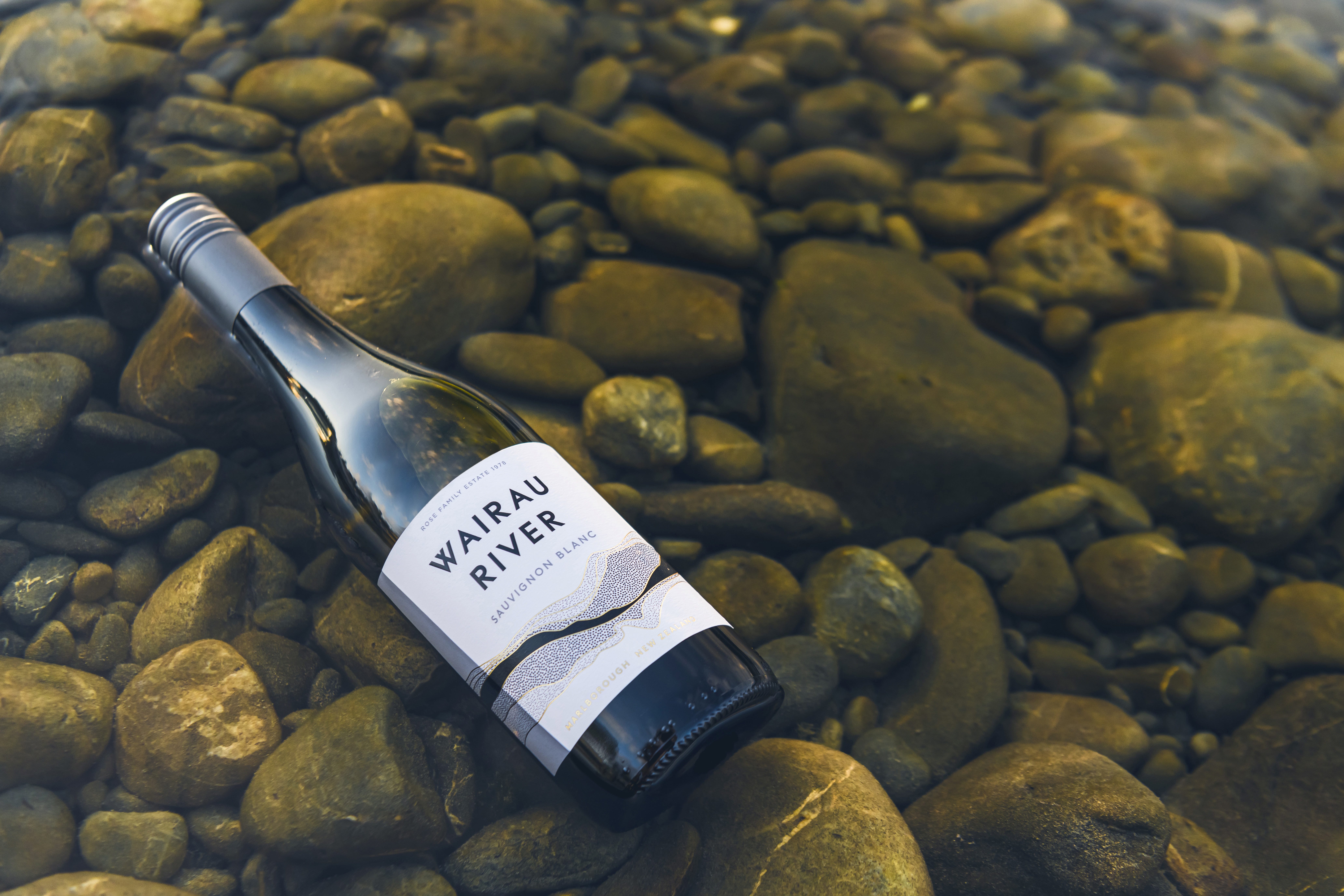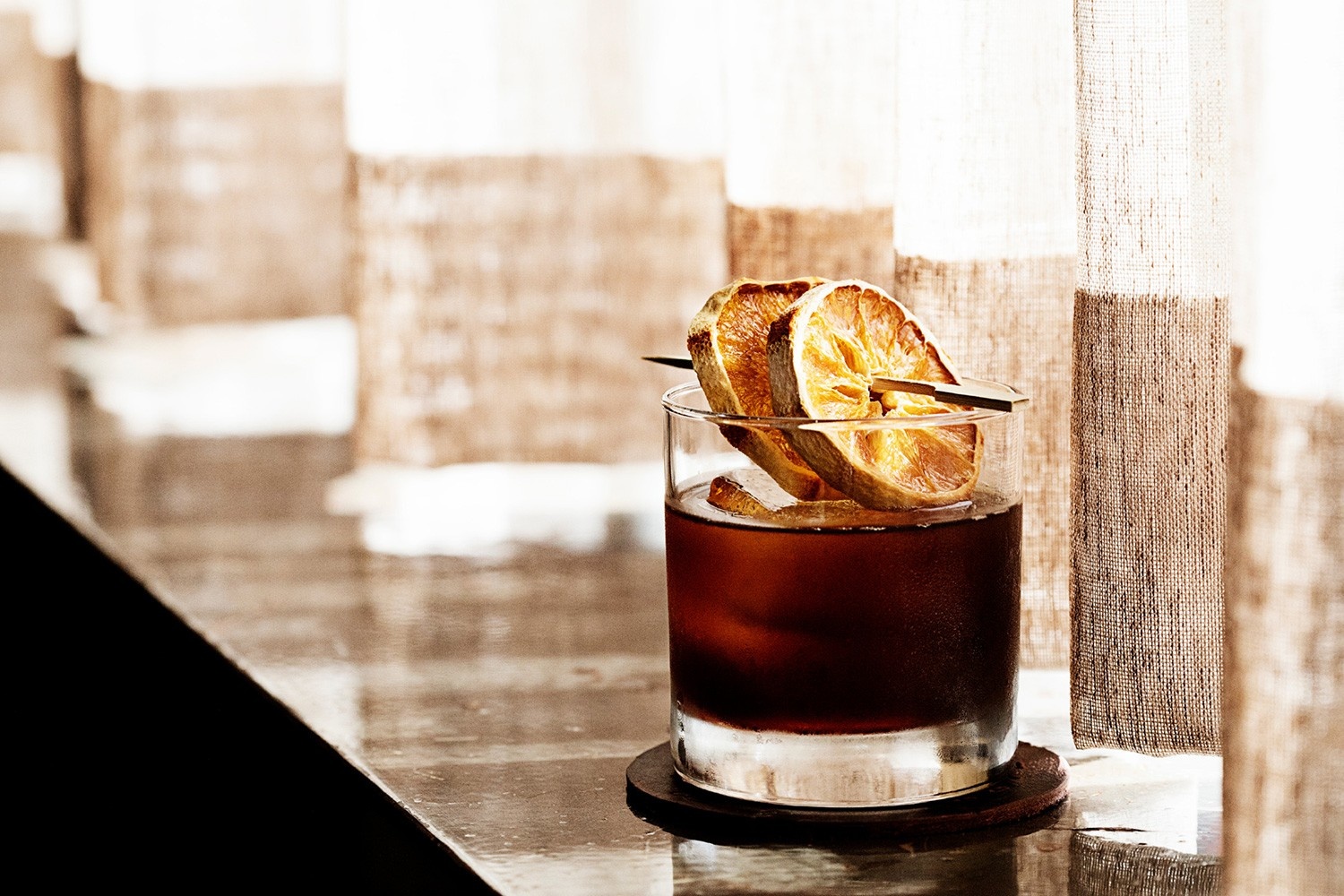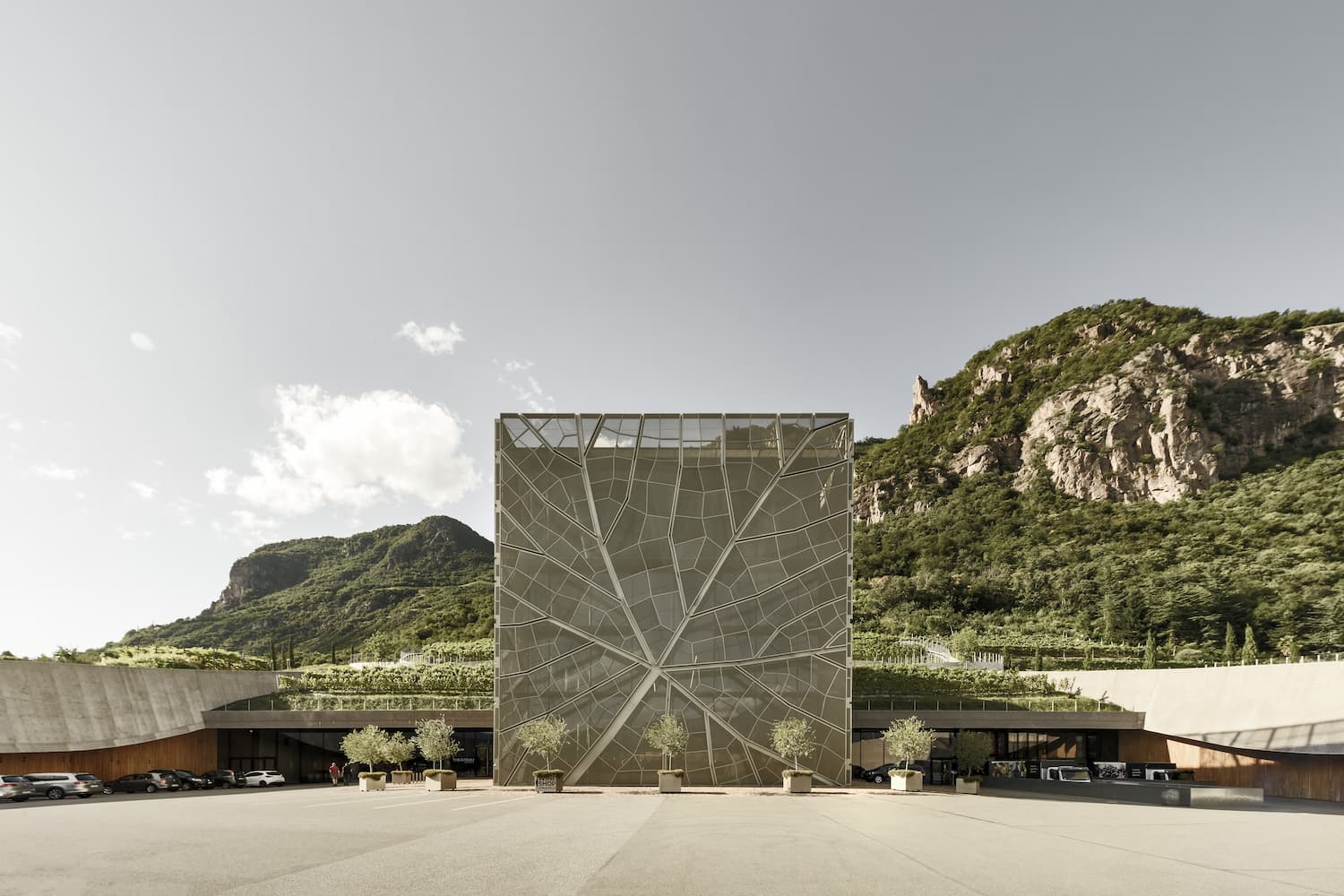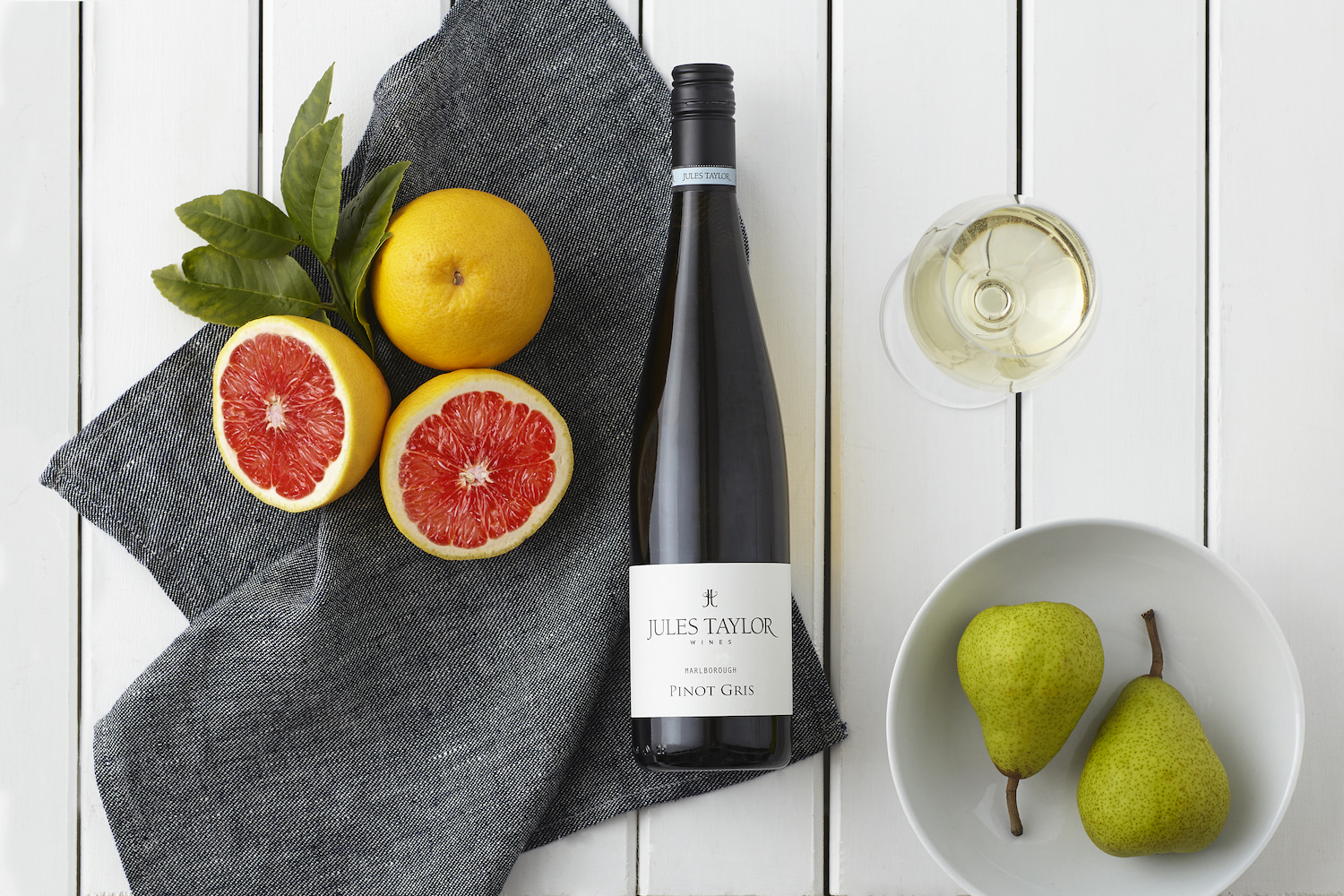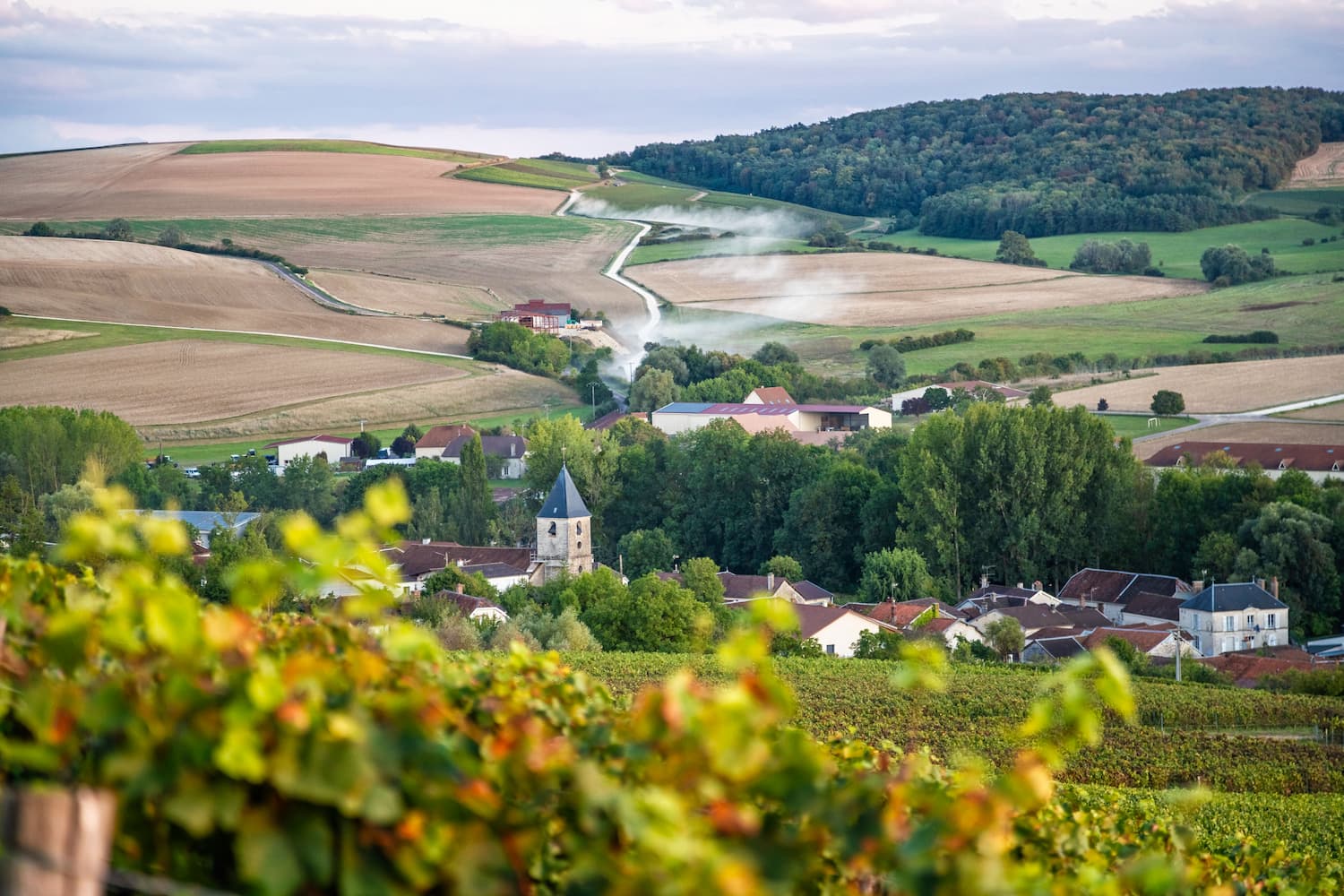North Stars:

Heritage Value

Production & Consumption

Community Support
“The Laos government has made it a mission to triple or even quadruple tourism numbers, and so far, it’s working.”
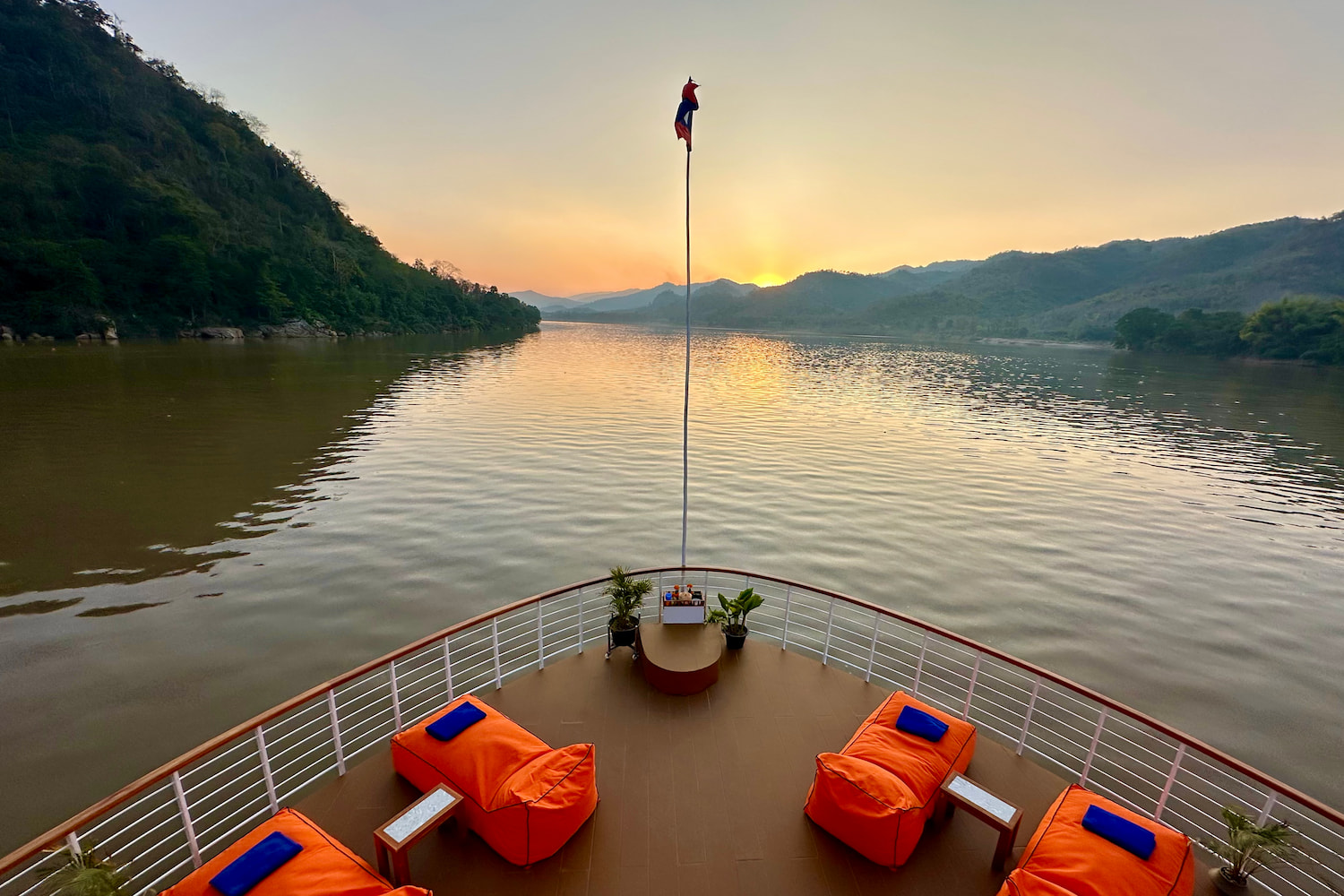
Add sailing the Mekong River to your 2025 wish list. Courtesy of Lauren Mowery.
If you love coffee, handmade textiles, and spicy food served in a quiet riverside setting, pin this town on your travel map.
Luang Prabang, a UNESCO-listed town in northern Laos, has attracted intrepid travelers for decades with its blend of traditional Lao and French colonial architecture, myriad temples, and slow pace of life.
Part of its appeal: Laos is home to more than 50 ethnic groups and boasts a cuisine (and heritage crafts!) that reflects such diversity. While often mischaracterized as a spicier cousin of Thai food, particularly the cuisine of northeastern Thailand (Isan), Lao food is distinct: it’s centered around grilled meats, sticky rice, and robust, smoky flavors.
Techniques like charring shallots and garlic over charcoal stoves are foundational, and key ingredients include fermented fish paste (pa daek), bamboo, lemongrass, and galangal. Dishes such as laab, tam mak hung (green papaya salad), and or lam (a peppery stew) have roots that stretch across borders, but in Luang Prabang, they feel entirely their own. Even in modern kitchens, most cooking still happens over the traditional tao lo charcoal stove — a reminder that in Laos, the method matters just as much as the meal.
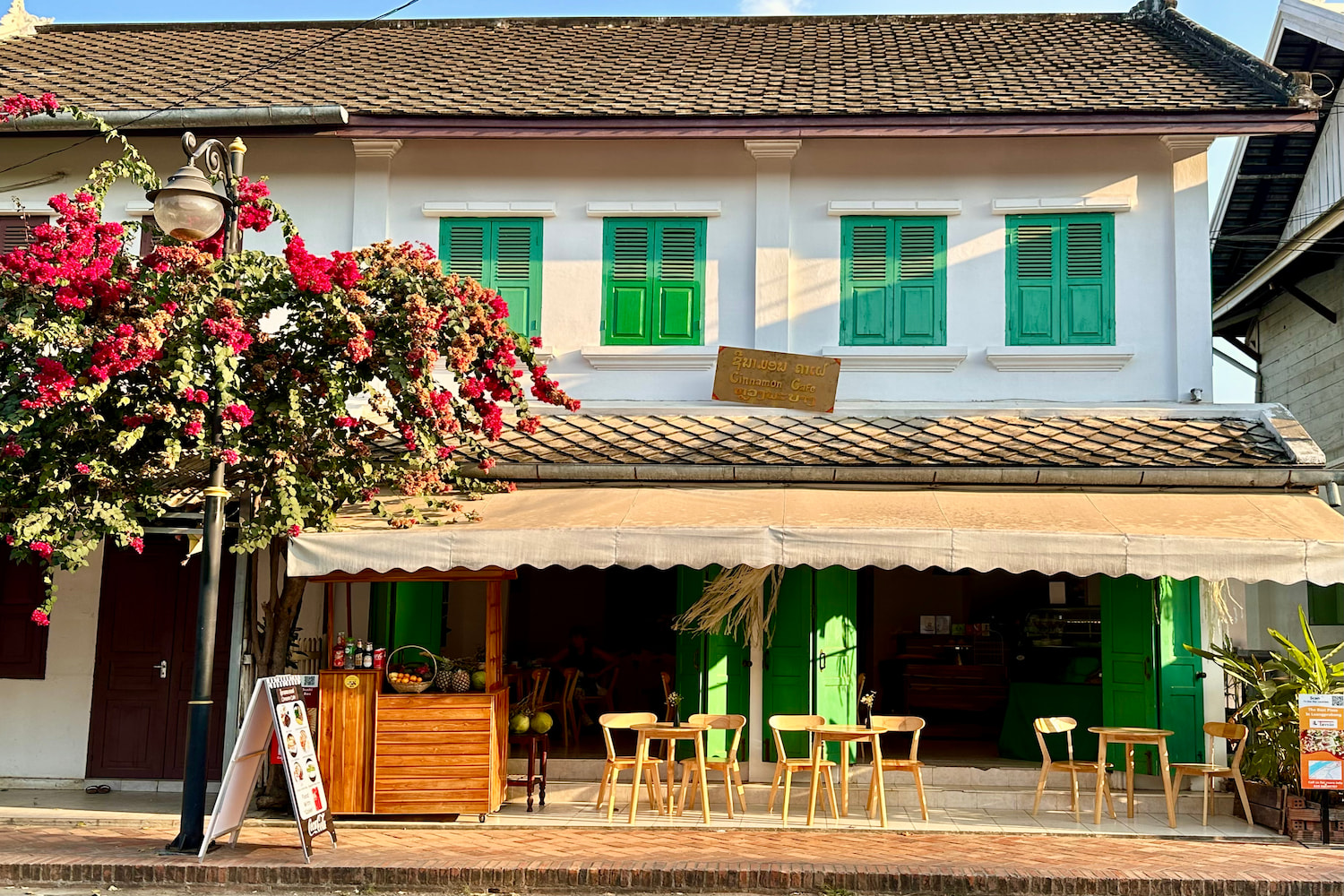
French colonial architecture in Luang Prabang. Courtesy of Lauren Mowery.
But change is afoot.
The Laos government has made it a mission to triple or even quadruple tourism numbers, and so far, it’s working. Travelers heading to Thailand, one of 2025’s buzziest destinations, can now add Luang Prabang to their itinerary with a quick one-hour flight or slow boat from Chiang Mai. For travelers coming from China, the new semi-high-speed train, operational since 2021, makes stops in Vientiane, Vang Vieng, and Luang Prabang. And a new boutique cruise ship plying the Mekong River allows travelers to drift in slowly, in style.
At the same time, development has ramped up. On a visit in February, I spoke with several shop owners worried about the government’s sale of local buildings—including a recently shuttered public school—to Chinese investors. Developers are putting up hotels and banks, which, locals say, Chinese tourists often prefer to Lao-owned businesses.
“The money doesn’t come to us, the Lao people,” more than one resident told me.
And yet, the relaxed spirit that first drew backpackers and retired expats still lingers. Here’s why 2025 is the year to go and ten experiences in Luang Prabang to prioritize when you do. (You’ll notice temples are missing—trust me, you’ll find those on your own.)
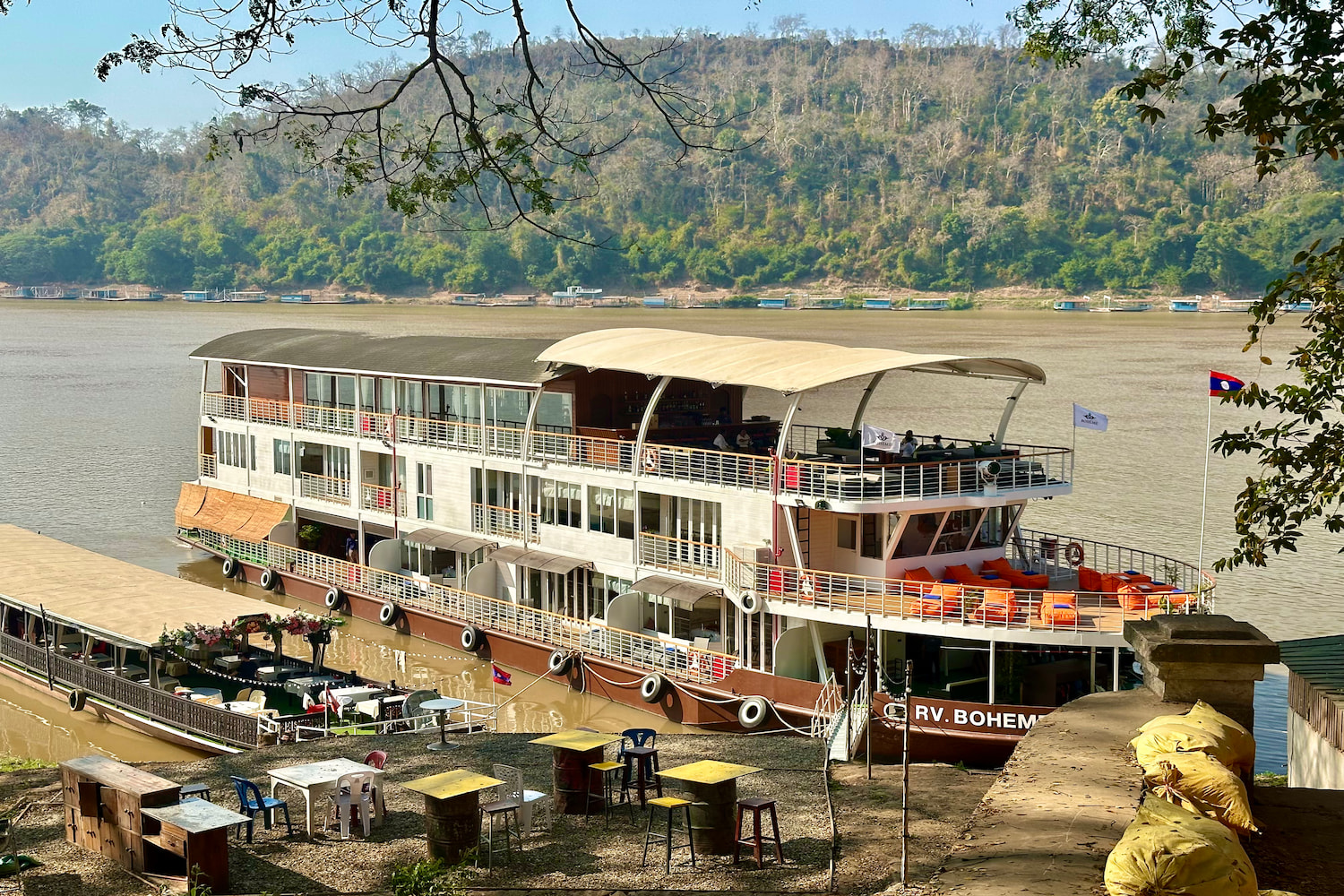
Shore shot of Bohème on the Mekong. Courtesy of Lauren Mowery.
Slow Cruise, Mekong-Style
The New York Times recently asked if 2025 is the breakout year for Laos. Travelers booked aboard the new boutique ship Bohème already know the answer. Launched in December 2024 by Mekong Kingdoms, this 13-suite wooden cruiser offers a deeply relaxing way to experience life along the Mekong between Luang Prabang and Vientiane. Each suite features wooden floors, balconies, and king beds dressed in handwoven local textiles. Meals lean heavily on regional ingredients, from tilapia wrapped in banana leaves and beef curry made with herbs sourced from nearby farms to cocktails garnished with local fruit and spices. During the day, you’ll float past villages and dramatic limestone outcroppings, pausing for excursions to milky blue waterfalls, the Pak Ou Caves filled with thousands of Buddha statues, and craft villages making silk, ceramics, and handmade paper. It’s slow travel done right.
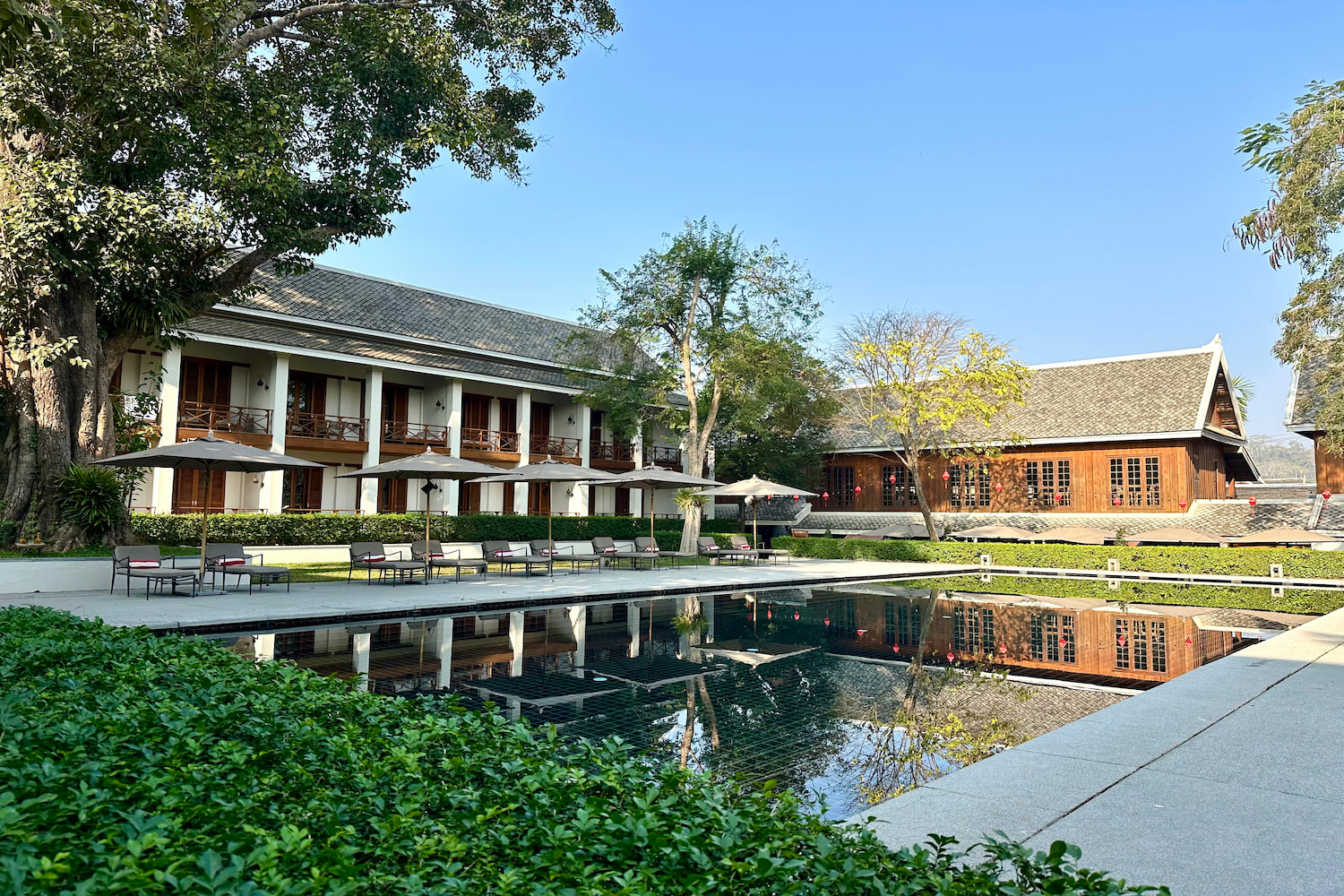
Avani+ hotel outer view. Courtesy of Lauren Mowery.
Stay Central, Sleep Stylishly
Located near Luang Prabang’s buzzing night market, the new Avani+ hotel keeps things sleek but local. The rooms are comfortable and modern, and the service is extremely friendly. While the hotel offers amenities such as a fitness room, spa, and a pool, you’ll likely spend most of your time strolling around the town. The property sits just outside of the night market, where dozens of food stalls set up, hawking everything from grilled meats and banana pancakes to spicy noodle soups and freshly pressed sugarcane juice. If you’re cruising with Mekong Kingdoms, look for package deals that combine Avani+ with your multi-day sail on Bohème.
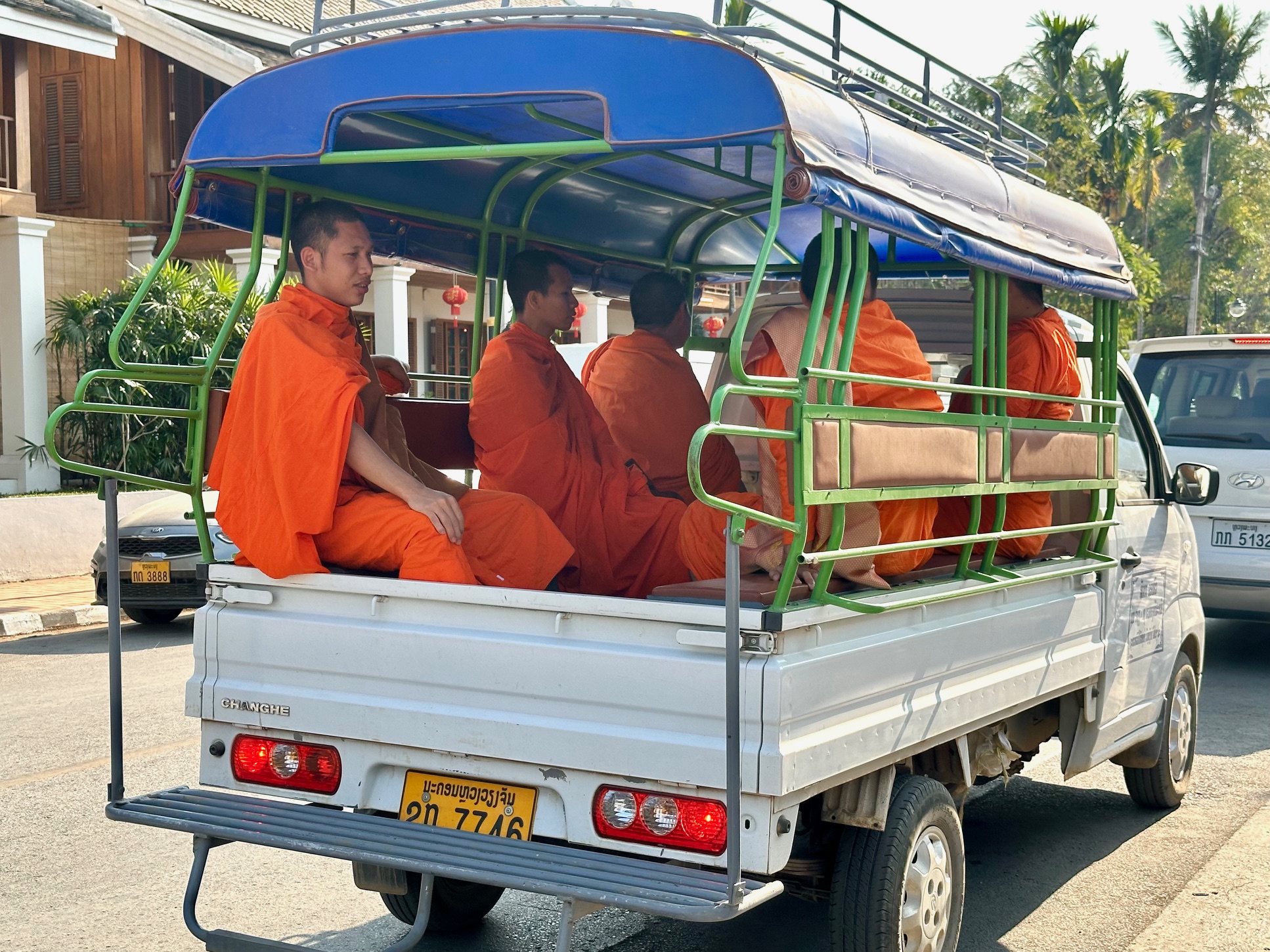
Monks are a frequent sight in Luang Prabang’s UNESCO Old Town. Courtesy of Lauren Mowery.
Bike or Wander the UNESCO Old Town
Luang Prabang earned UNESCO World Heritage Site status in 1995 for its singular architecture. a blend of traditional Lao design and 19th- and 20th-century European colonial influences. The designation helped preserve the city’s historic core, where Buddhist temples, French villas, and teakwood houses coexist along palm-lined streets. Wander aimlessly through the old quarter. Bike along the river. Check out Wat Xieng Thong’s glittering mosaics or simply stroll past wooden colonial-era homes. Recharge at local favorites like Le Banneton for buttery croissants and crusty baguettes or Joma Bakery for delicious pastries, bread, and Lao coffee.
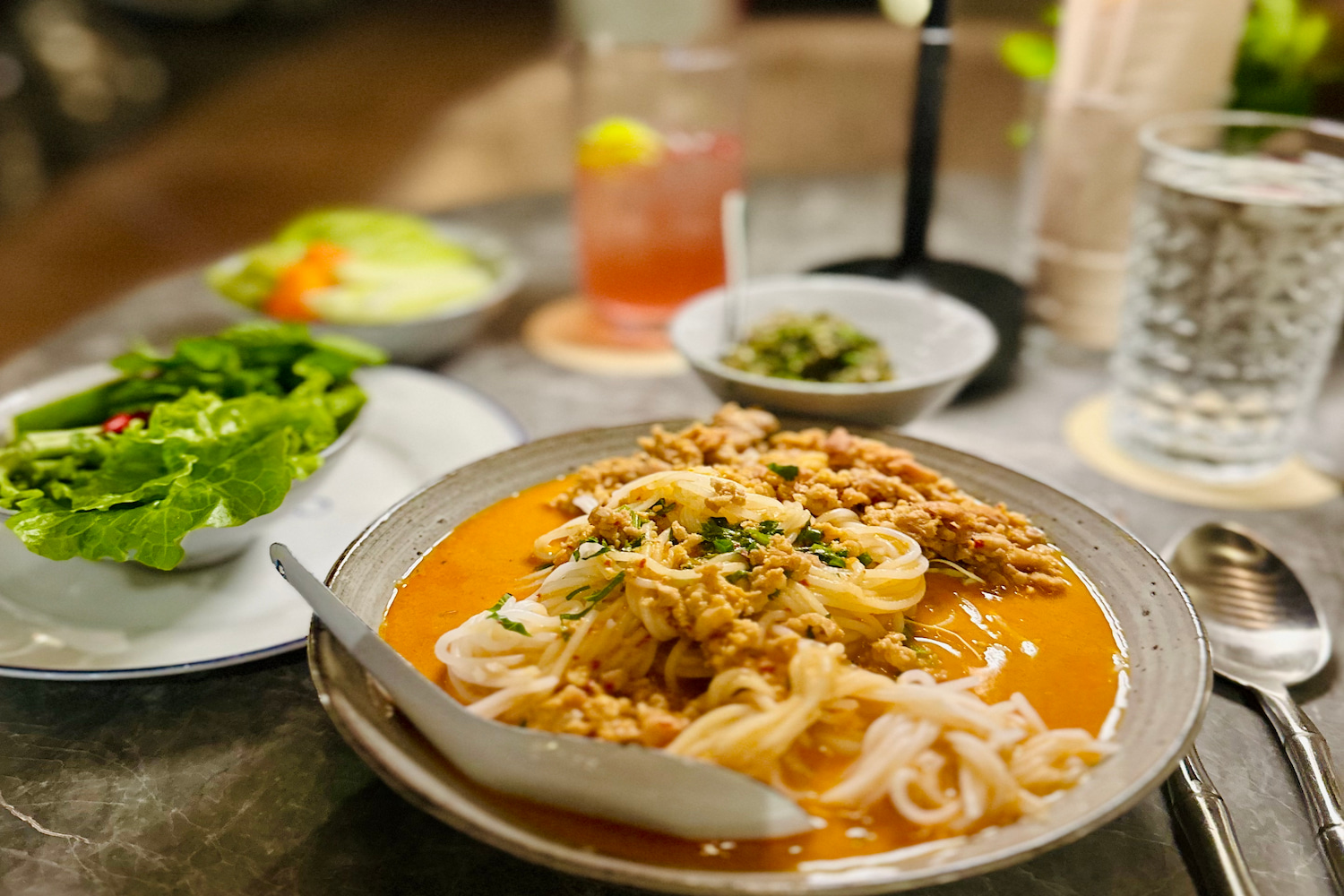
Spicy Laotian noodle dish at Little Lao. Courtesy of Lauren Mowery.
Eat Your Way Through the Streets of Luang Prabang
Luang Prabang’s food scene is flavorful, unfussy, and shockingly affordable (to Western travelers). Relative newcomer Little Lao serves up dishes like spicy noodle curry, lemongrass chicken, and steamed river fish in a setting that feels modern without being trendy. For something more hands-on, Tamarind offers casual cooking classes where you’ll learn to wrap fish in banana leaves, mix jeow (a Lao dipping sauce), and prepare sticky rice like a local. You’ll eat what you make while sitting by a lily pond — not bad for an afternoon that costs less than dinner back home. For a more upmarket experience, The Main Street Bar & Grill at Avani+ Luang Prabang serves excellent Laotian dishes, despite its Western name. Other spots to bookmark include Le Calao and Manda de Laos. Or, do as the locals do, and graze the abundance of snacks, meat sticks, and grilled vegetables at the daily night market.
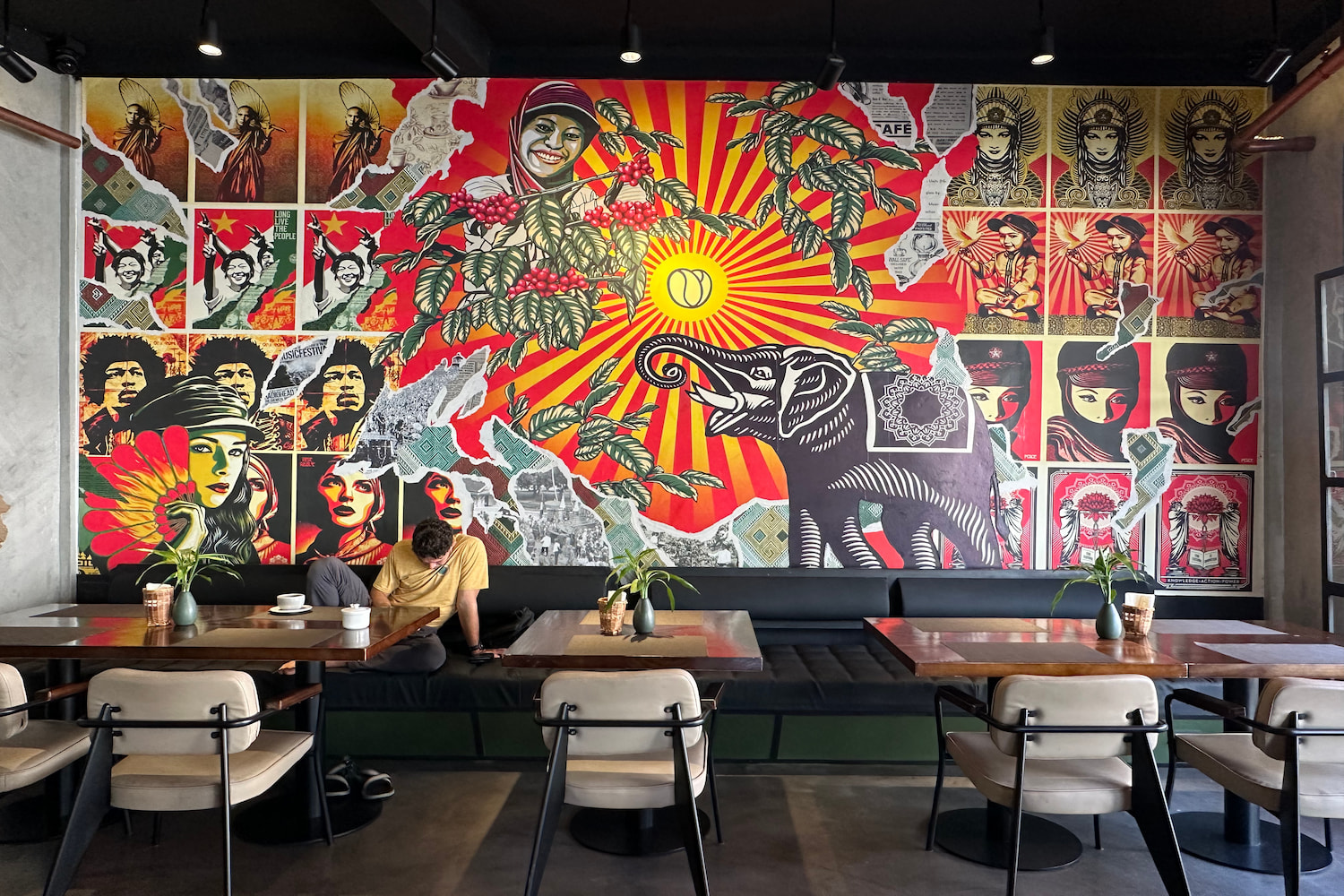
Luang Prabang boasts numerous coffee shops. Courtesy of Lauren Mowery.
Get Caffeinated Across Town
For coffee lovers, the coffee culture in Luang Prabang will pleasantly surprise. While cafes line the streets, offering easy access to a cup of Lao coffee at practically every block, dedicated coffee shops, including third wave pour over spots devoted to Laos coffee, have proliferated. One of the best, both for minimalist Asian design and a range of beans, origins, and processing styles (washed versus natural), is LuLaLao Coffee. I went every morning for a langurous cup in the window. Another excellent option is Saffron Coffee. Though a bit more rustic in ambiance, its riverside location and high-quality beans make it a nice afternoon stop.
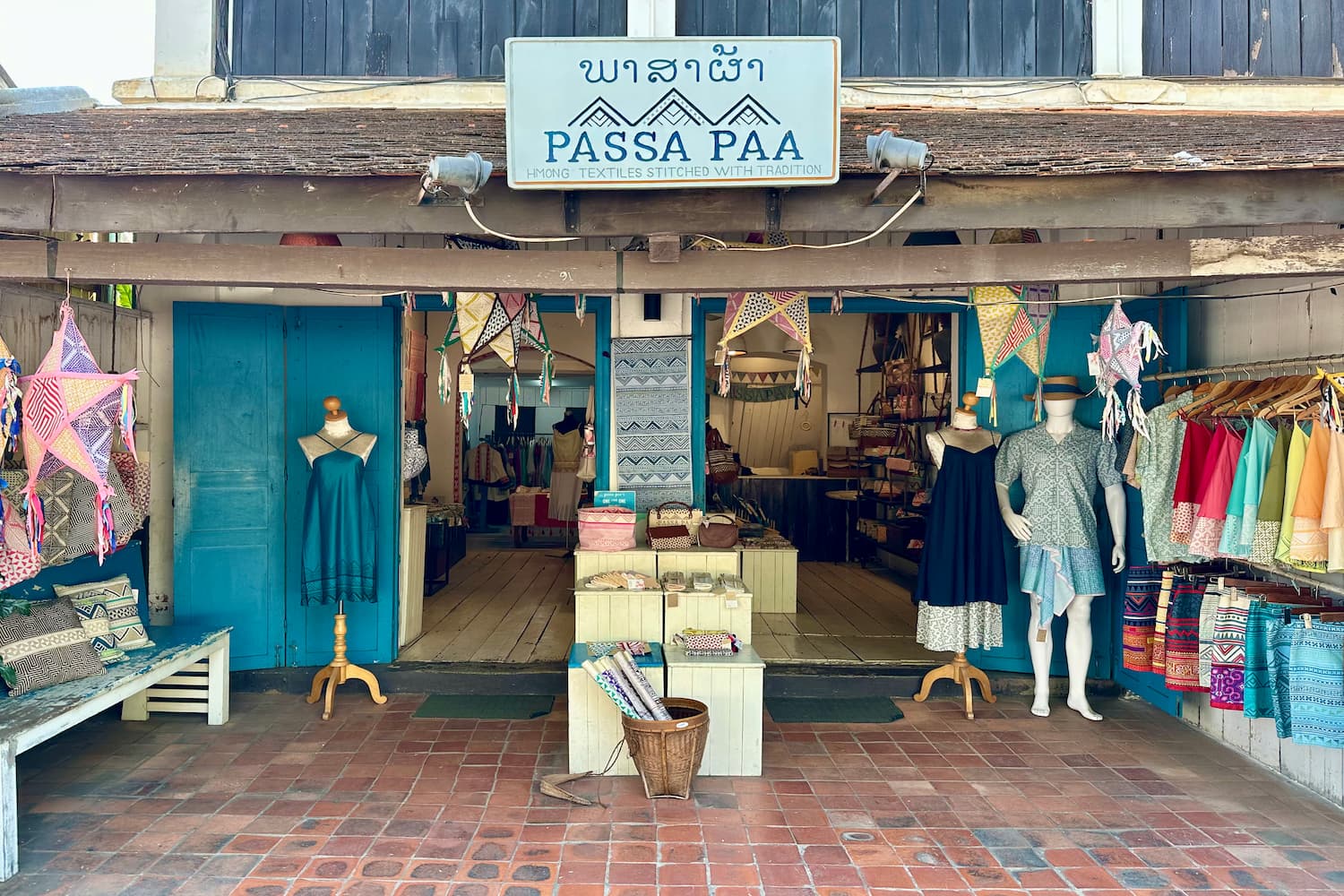
Passa Paa shop in Luang Prabang. Courtesy of Lauren Mowery.
Shop for Handmade Crafts, Textiles, and Gifts
While this may sound like an exaggeration, it’s not: Luang Prabang has some of the best shopping in all of SE Asia. Period. In fact, Lao textiles are considered to be some of the finest in the world. After opening my eyes to the beauty of heritage silk weaving on a trip to Uzbekistan, I arrived in Luang Prabang dialed into the artisan scene. What I found was refreshing: nearly every shop sold handmade goods, often from the villages of ethnic hill tribes, sent to town for sale to travelers.
Having lamented the loss of handmade goods around the world in favor of cheap trinkets made (often) in China, it was refreshing to shop in stores that supported nearby communities, using sustainable or organic materials while preserving weaving and design traditions. You’ll find cotton napkins dyed in local indigo, raw silk scarves in rich hues of emerald and marigold, clothing evocative of customary dress, plus home decor, photography, art, and other goods. In fact, my pro tip: arrive with a second suitcase (or buy a giant overflow tote from one of the shops.) This is retail therapy you can feel good about. Stores I recommend include Passa Paa, Ock Pop Tok, Anakha The Blue House, ma te sai, and Yaimaii for eco-friendly fashion from natural fibers. For beautiful wooden bowls, don’t miss Caruso.
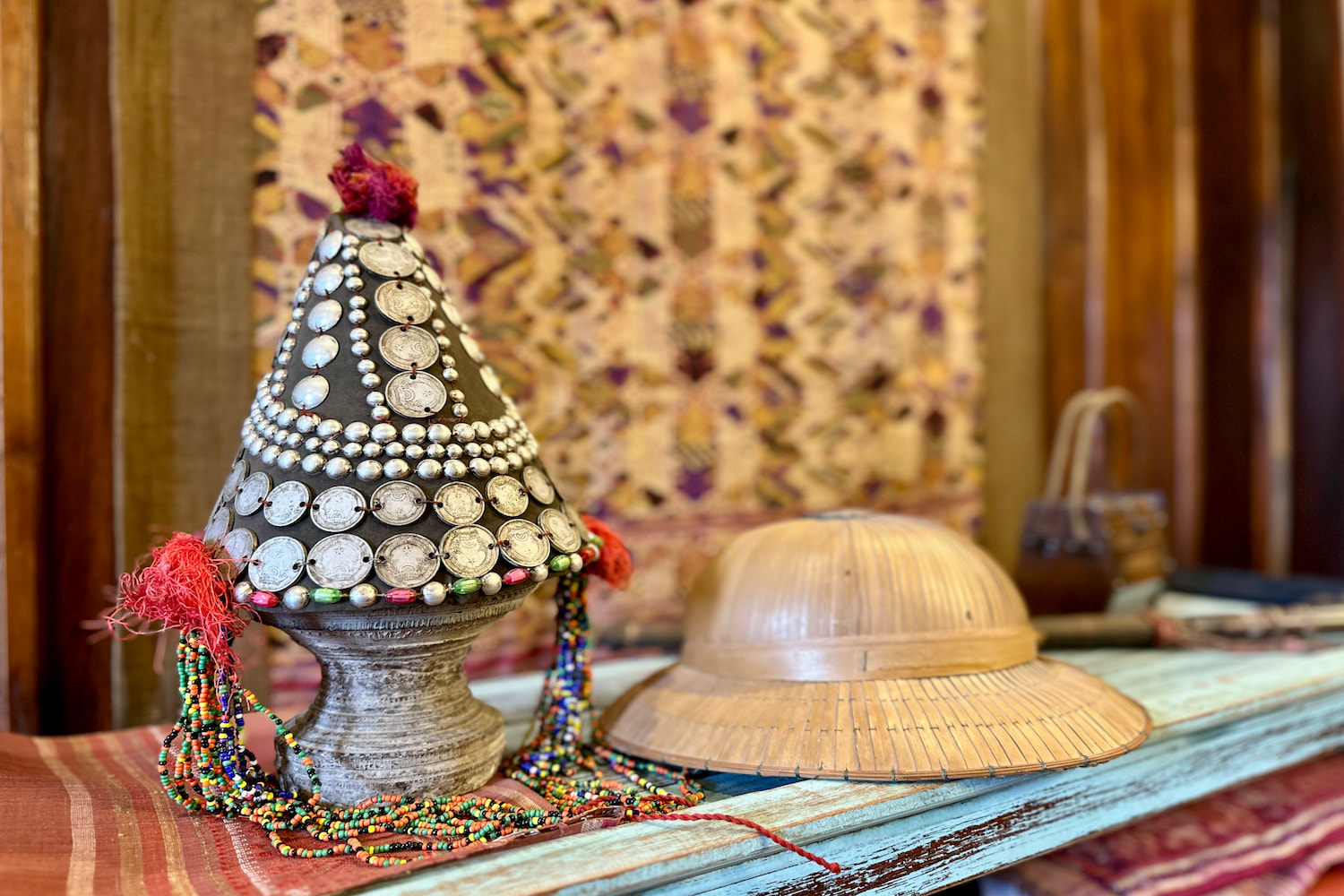
Handwoven hat on display at a local Luang Prabang shop. Courtesy of Lauren Mowery.
Learn a Craft: Mulberry Paper in Ban Xang Khong
A quick 15-minute tuk-tuk or bike ride east of town takes you to Ban Xang Khong, a riverside village known for its paper and textile artisans. Here, traditional saa paper is made by hand from the bark of mulberry trees: soaked, pulped, and pressed into delicate sheets embedded with local flowers and leaves. At the well-known Nalongkone Shop, visitors can watch artisans at work or take part in a short, hands-on workshop where you’ll make your own paper creation to take home. The process is meditative, the results are beautiful, and the experience offers a satisfying break from temple-hopping. Paper-making has been practiced in the region for generations, and spending time with these artisans gives you a tactile connection to the craft and the people preserving it.
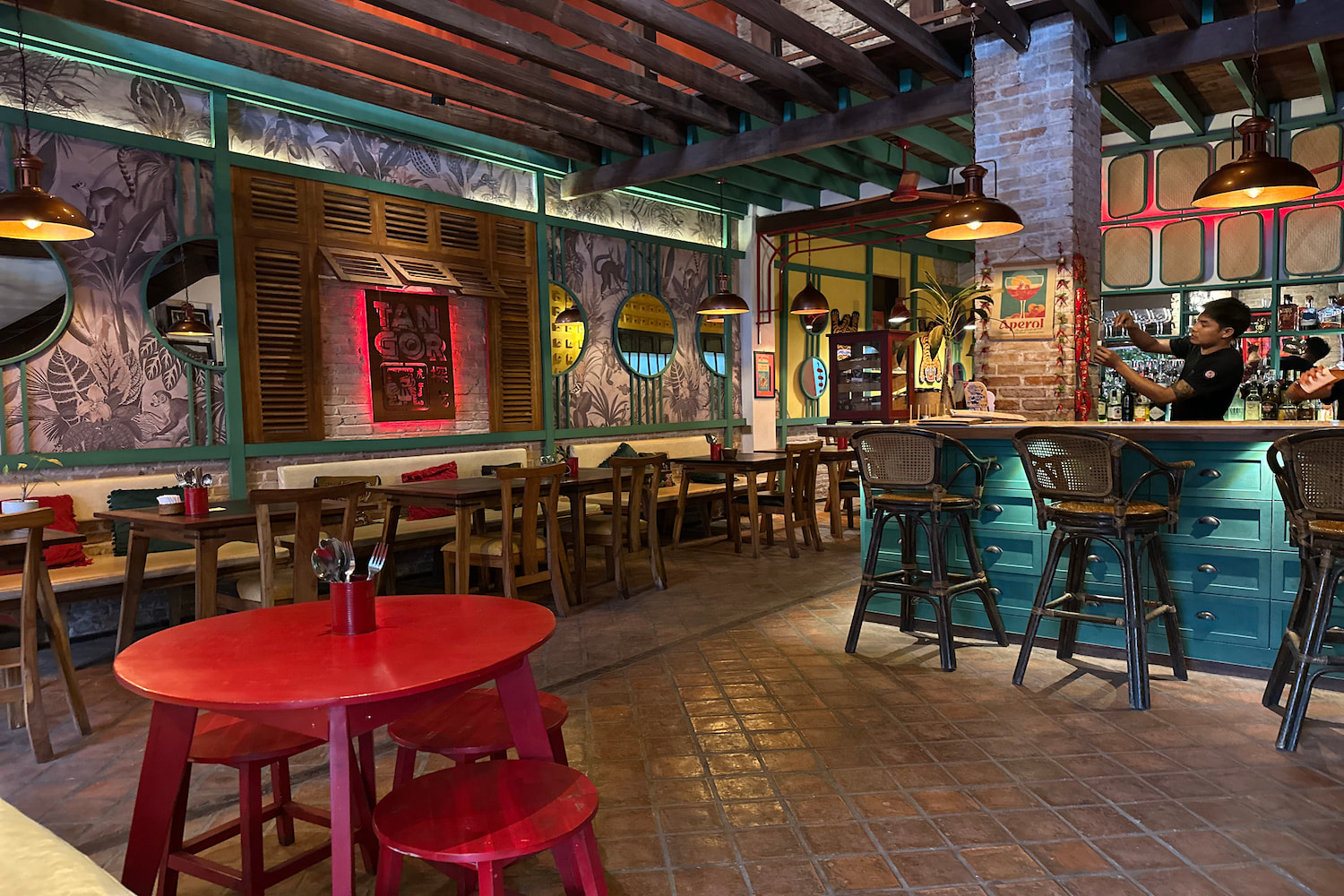
Inside look at one of Luang Prabang’s standout cocktail spots. Courtesy of Lauren Mowery.
Take a Sip: Luang Prabang Has a Surprising Cocktail Scene
Luang Prabang may be a temple town, but it doesn’t shy away from a good drink. You’ll find cocktail bars scattered all over, often tucked into French colonial buildings or down side alleys lit by lanterns. At Little Lao Culture Bar, the menu plays with ingredients like sticky rice–washed gin, jackfruit syrup, and tamarind. Over at speakeasy-style Artisan Bar, bartenders mix toasted rice and Lao bitters with the same care you’d find in any big-city drinking den but with better ambiance and lower prices. Whether you’re in the mood for a floral highball or a craft Laotian beer, the drinking scene skews far more interesting than the size of the town suggests.
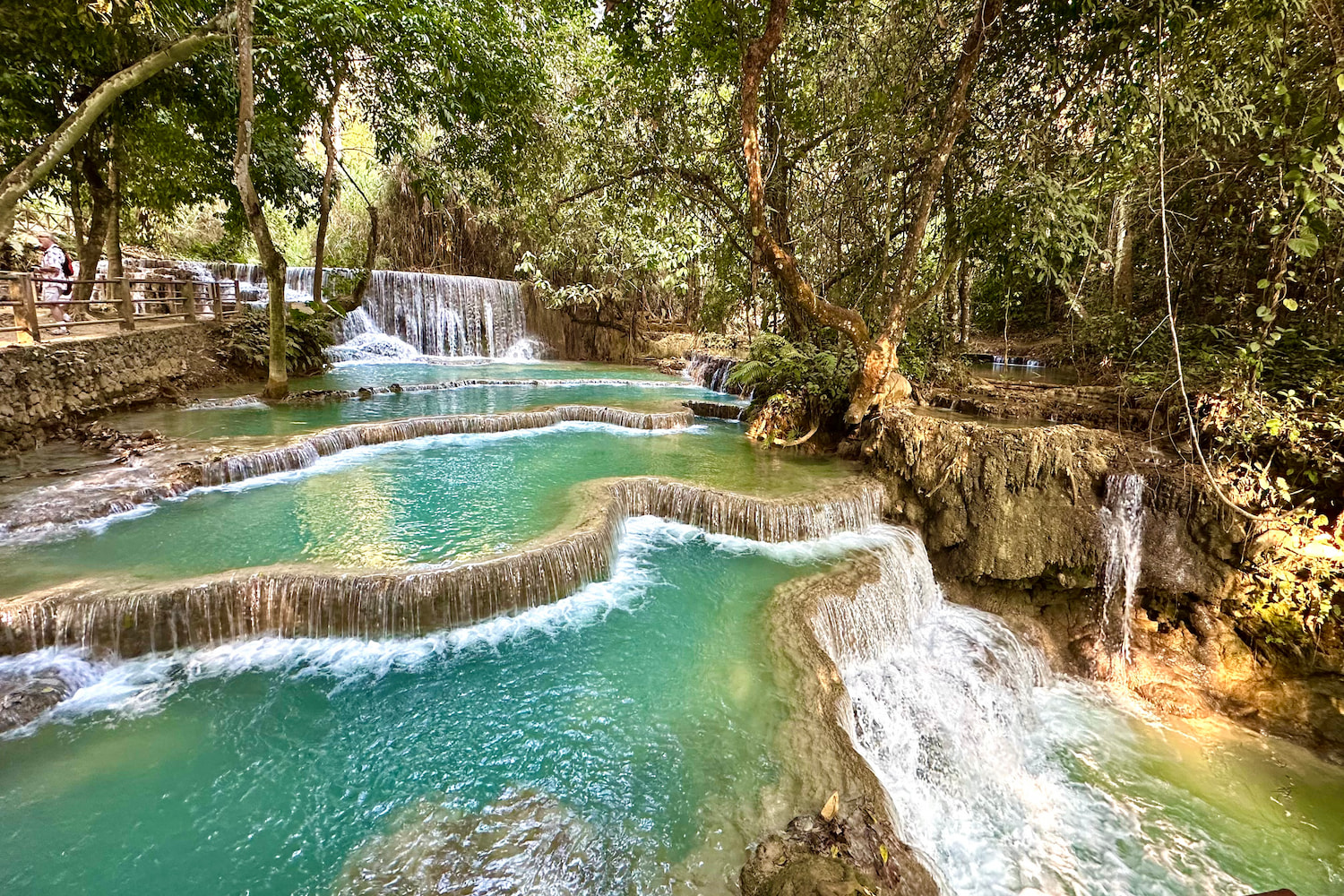
Luang Si Falls. Courtesy of Lauren Mowery.
Book a Day Trip to Kuang Si Falls
About 45 minutes by tuk-tuk from town, Kuang Si Falls lives up to the hype. I usually roll my eyes at the suggestion of a waterfall excursion, but instead, I gasped and took over 50 photos at Kuang Si. The falls cascade in tiers down limestone formations into turquoise pools perfect for swimming, wading, or just soaking tired feet. A network of shaded walking trails winds through the surrounding forest, leading to higher viewpoints and quieter pools, that somehow get better with each ascent. At the base of the falls, you’ll find the Tat Kuang Si Bear Rescue Centre, home to dozens of Asiatic black bears rescued from poaching and illegal trade. Pack a swimsuit, wear comfortable shoes, and plan to spend a few hours. There are food stalls near the entrance, plus changing rooms and picnic spots, making it an easy, family-friendly day trip that doesn’t feel overly touristy.
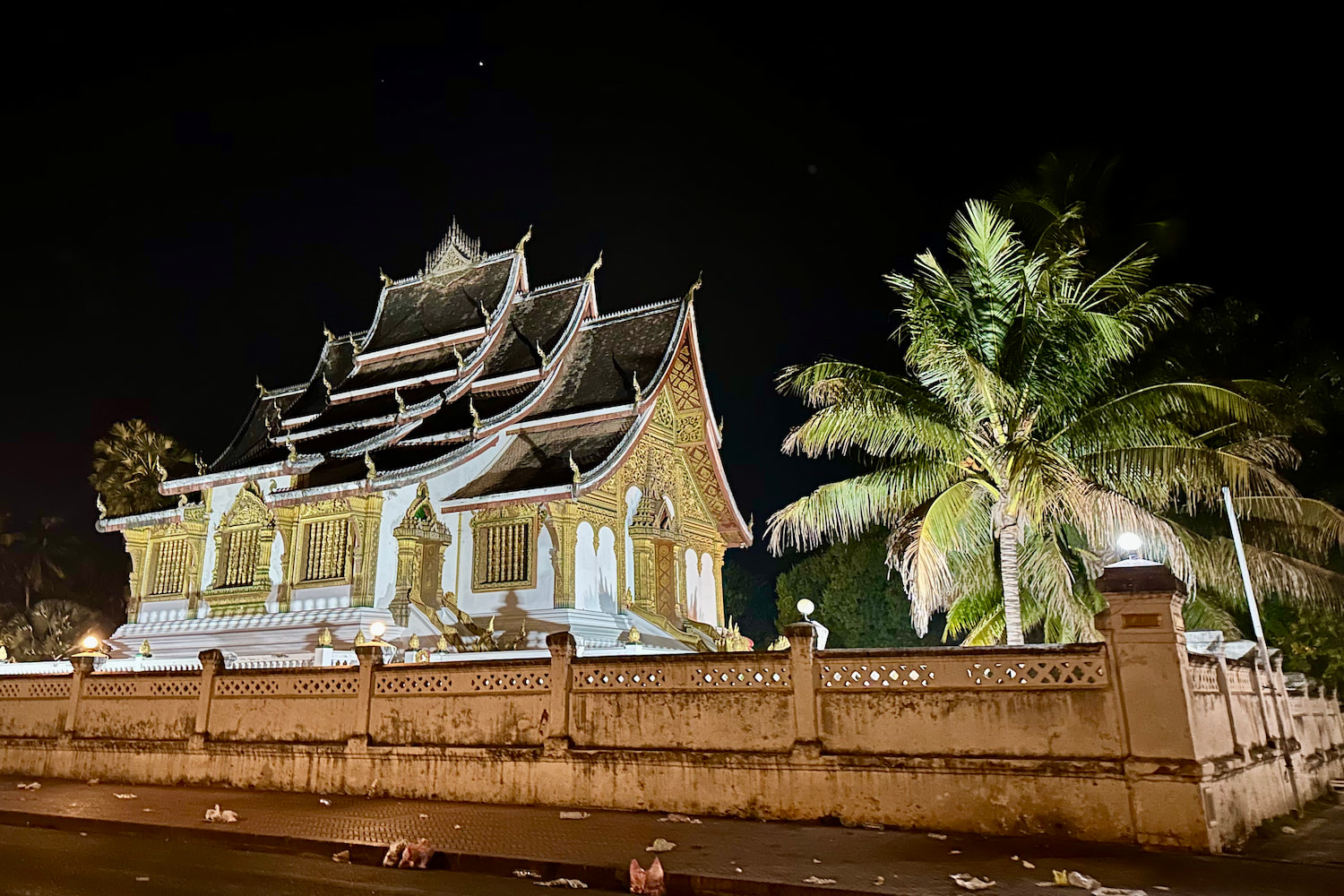
Temples at night. Courtesy of Lauren Mowery.
Visit Luang Prabang During the Festival of Lights
Each October, Luang Prabang glows from within during Boun Lai Heua Fai, the Festival of Lights that marks the end of Buddhist Lent. The celebration blends sacred ritual and community spectacle: locals craft candlelit boats and set them afloat on the Mekong to honor the water spirits and bid farewell to the rainy season. Elaborate lanterns — some simple, others sculptural works of art — light up temples, alleyways, and balconies. Children parade through the streets with glowing floats, and monks chant late into the night. The effect is transportive: for one night, the entire town flickers with reflection and release. If you’re lucky enough to be in Luang Prabang in October, it’s an unforgettable way to see the city in a new light — literally.
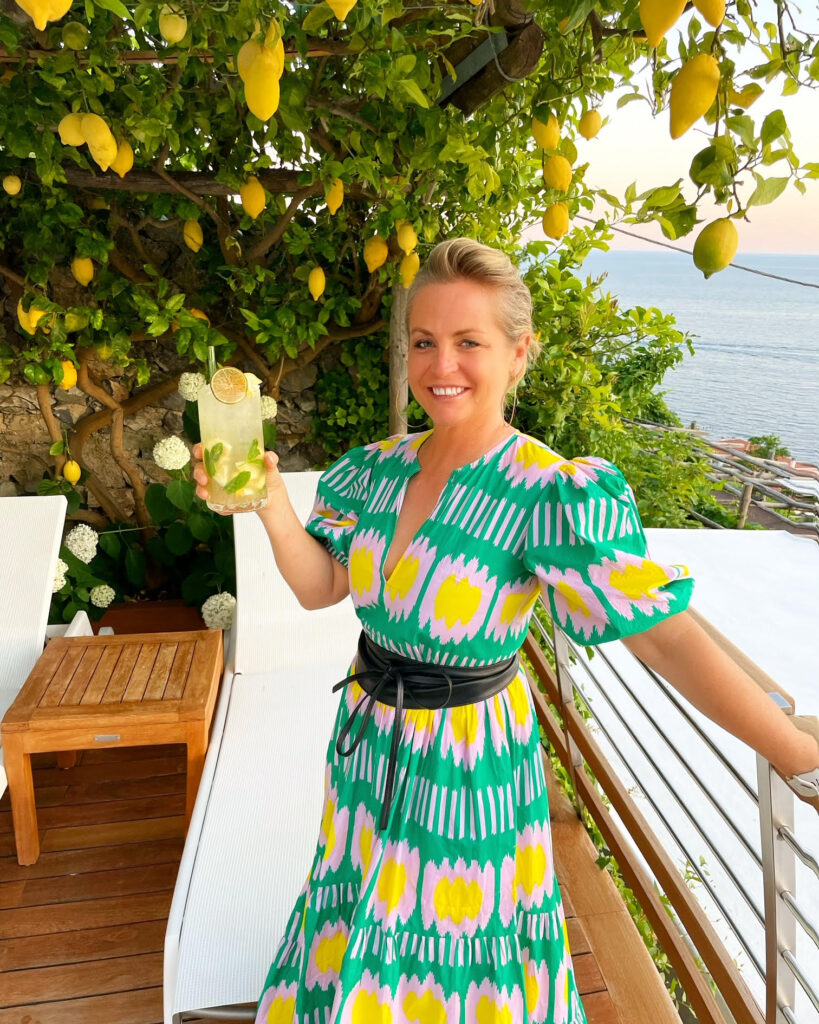
Founder and CEO of Azure Road, Lauren Mowery is a longtime wine, food, and travel writer. Mowery continues to serve on Decanter Magazine’s 12-strong US editorial team. Prior to joining Decanter, she spent five years as the travel editor at Wine Enthusiast. Mowery has earned accolades for her writing and photography, having contributed travel, drinks, food, and sustainability content to publications like Food & Wine, Forbes, Afar, The Independent, Saveur, Hemispheres, U.S. News & World Report, SCUBA Diving, Plate, Chef & Restaurant, Hotels Above Par, AAA, Fodors.com, Lonely Planet, USA Today, Men’s Journal, and Time Out, among others.
Pursuing her Master of Wine certification, she has also been a regular wine and spirits writer for Tasting Panel, Somm Journal, VinePair, Punch, and SevenFifty Daily. Mowery is a graduate of the University of Virginia and Fordham Law School, and she completed two wine harvests in South Africa.
Follow her on Instagram @AzureRoad and TikTok @AzureRoad
North Stars: Community Support, Heritage Value, Production and Consumption


